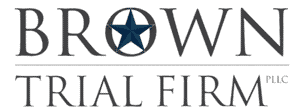Common tractor trailer and semi wrecks, plus tips for avoiding them
Large commercial trucks are a common sight on highways and interstates in Texas and all over the country. They support the backbone of the U.S. economy by ferrying essential goods from one place to another in order to cater to our growing demand.However, these commercial vehicles pose a high risk on the roads due to their massive size and weight, which result in increased property damage, catastrophic injuries and higher risk of fatalities when an accident occurs.
The Federal Motor Carrier Safety Administration (FMCSA) says that almost 100,000 truck accidents result in injury every year. The number includes about 5,000 fatal crashes. Therefore, learning about the different types of truck accidents and how you can avoid each one of them could reduce your chances of causing or being a victim of a truck accident.
Types of truck accidents
There are several common types of truck wrecks in Texas, including:
- Jackknifes
- Rollovers
- Unsecured loads
- Head-on
- Rear-end
- Sideswipe
- Underrides
- Blindspot accidents
- Tire blowouts
- T-bone
We’ll go into more depth about a few of these accident types below.
Jackknife accidents
Big rig trucks have 2 parts: the trailer and the cab. They are connected by a hitch that is located below the forward area of a trailer. A jackknife accident occurs when the cab and trailer skid in different directions, forming a 90-degree angle.
Jackknife wrecks are commonly caused by hard and fast braking, improper brake adjustment and maintenance and using the brake in bad weather. These crashes often involve multiple vehicles because the trucks can rollover or overturn, increasing the chances of other vehicles running into the jackknifed truck.
Jackknifing can be prevented and potential accidents are avoidable when drivers are cautious during bad weather, brake properly and understand the weight of their load.
Rollover accidents
Rollover truck accidents are among the most fatal accidents in Texas. They often occur when a truck driver loses control of their truck, causing it to roll over on the road. These are the most deadly accidents for truck drivers but they are a hazard for anyone. Drivers might lose control because of speeding, overloading, tire blowouts and wrongly navigating dangerous corners and curves.
Wearing your seatbelt could reduce your risk of fatality by up to 75 percent. Drivers can also reduce the likelihood of rollover accidents by slowing down, ensuring loads are tied down well and making sure their truck is mechanically sound before embarking.
Unsecured load accidents
Incorrectly loaded or unsecured freight can fall out of a truck, causing catastrophic accidents and risking a multi-car accident. The extremities of such accidents depend on the type and characteristics of the cargo.
To avoid unsecured load accidents, the federal government advises that cargo must be firmly secured on or within a vehicle using strong structures like dunnage, tie-downs and shoring bars.
Head-on collisions
Head-on truck accidents occur when a truck driver loses control of their rig and veers into oncoming traffic. They are rare but can result in fatal injuries, especially when the trucks collide with smaller vehicles.
They might occur when drivers lose control of their truck for reasons like driver fatigue, distracted driving and driving under the influence. Avoiding distractions and driving in the right lane helps to reduce these collisions.
Rear-end and sideswipe accidents
Due to the big rigs’ enormous size and weight, they need more time—about 5 to 6 seconds—to stop and avoid road hazards. Thus, when truck drivers drive too fast for current road conditions, tailgate other vehicles or are distracted, it’s difficult for them to make quick turns or sudden stops. These inabilities to make sudden maneuvers can result in rear-end and sideswipe accidents.
Underride accidents
Underrides are rear-ended collisions where a passenger car strikes a big rig from behind or the side and slides under the trailer. They happen when trucks stop quickly and suddenly, truck drivers fail to signal correctly when turning, a truck has inconsistent speed and a car is in a truck’s blind spot when a truck changes lanes.
These accidents usually result in severe injuries or fatalities because the top and front of the car may be crushed. The National Transportation Board recommends metal barriers (called “underride guards”) to prevent the smaller cars from sliding underneath.
Blindspot accidents
Blindspot accidents are often caused by reduced visibility when a driver is unable to see another vehicle. Large commercial trucks have bigger and more significant blind spots where the driver can’t see other vehicles. Due to their size, big rigs have blind spots on both sides, the back of the trailer and the trailer’s immediate front.
When vehicles are located in any of these blind spots, they can easily go unnoticed and make a driver unconsciously cause an accident. Truck drivers are responsible for checking their blind spots to help prevent and avoid these types of truck accidents.
Contact a Texas truck accident attorney if you’ve been hurt
If you or a loved one have suffered serious injuries from a commercial truck accident, contact our team at Brown Trial Firm. We will discuss the circumstances of your case and help you to determine liability. Our attorneys will aggressively represent you, ensure your rights are protected and help you recover significant financial compensation.
